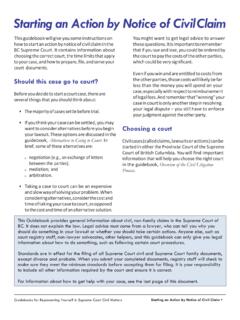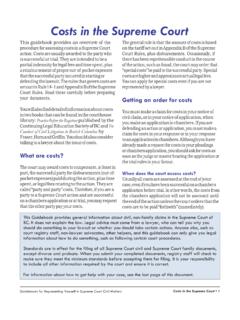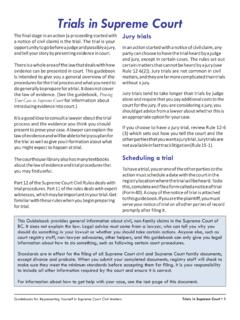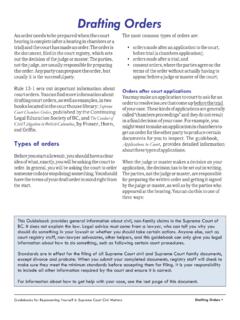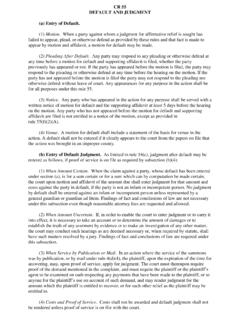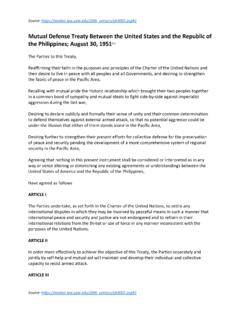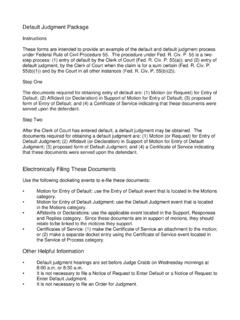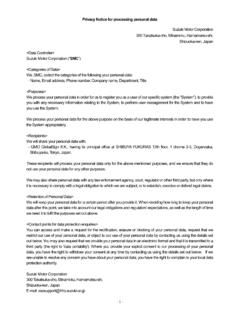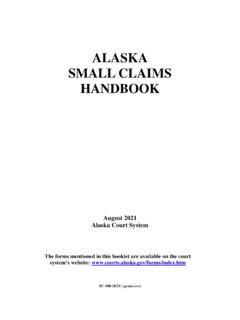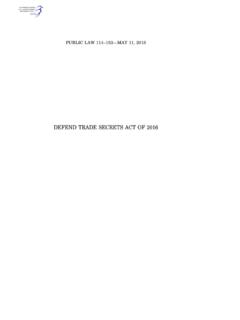Transcription of Defending an Action Started by a Notice of Civil Claim
1 Guidebooks for Representing Yourself in Supreme Court Civil Matters Defending an Action Started by a Notice of Civil Claim Defending an Action Started by a Notice of Civil Claim This guidebook (along with the guidebook Starting an Action by Notice of Civil Claim ) will assist you in Defending a lawsuit Started against you in the Supreme Court of British Columbia. When you have been served with a Notice of Civil Claim , you might find it helpful to talk to a lawyer about what you need to do. Defending a lawsuit is complicated and time- consuming and the consequences of doing things late or incorrectly may be serious.
2 How to defend yourself A Notice of Civil Claim is a document that starts a lawsuit against you. The person who Started the Action is called the plaintiff and you are called the defendant. Generally, you must be personally served with the Notice of Civil Claim . Personal service usually means that someone (normally a process server) will have personally handed you the document or will have left the document with an adult at your home or work. However, if a person has difficulty serving you, the rules provide for other ways for you to be served. If the Claim is against a company, the company may be served through its registered office or its officers.
3 There is additional information on service of documents (including information about alternative ways for you to be served) in the guidebook, Starting an Action by Notice of Civil Claim ). Once you have been served, procedural time limits relating to your lawsuit begin to run. Important time limits Time limits are important in legal claims in two ways. First, they set limits on how long someone can wait before they start a lawsuit. Second, time limits apply to court procedures (procedural time limits). Limitation periods The first thing you need to think about is limitation periods. Limitation periods set limits on how long the plaintiff can wait before starting a lawsuit.
4 For example, the plaintiff must start an Action for damages arising from a motor vehicle accident within 2 years of the date of the accident. This Guidebook provides general information about Civil , non-family claims in the Supreme Court of BC. It does not explain the law. Legal advice must come from a lawyer, who can tell you why you should do something in your lawsuit or whether you should take certain actions. Anyone else, such as court registry staff, non-lawyer advocates, other helpers, and this guidebook can only give you legal information about how to do something, such as following certain court procedures.
5 Standards are in effect for the filing of all Supreme Court Civil and Supreme Court family documents, except divorce and probate. When you submit your completed documents, registry staff will check to make sure they meet the minimum standards before accepting them for filing. It is your responsibility to include all other information required by the court and ensure it is correct. For information about how to get help with your case, see the last page of this document. Defending an Action Started by a Notice of Civil Claim Guidebooks for Representing Yourself in Supreme Court Civil Matters Here are some other things you need to know about limitation periods: Different types of cases have different limitation periods.
6 The Limitation Act (a copy of this Act can found in the courthouse library or online at ) sets out the different limitation periods for different types of cases. Most limitation periods vary from 2 to 6 years and start from the date that: to Civil Claim is included in this guidebook. It also provides the plaintiff with your address for service so he or she can mail, e-mail, fax or hand deliver documents to you. You will need to prepare, file and serve a response to Civil Claim within 21 days (if you live in Canada): o the event you want to sue about happened; or o the date you found out about your possible Claim .
7 If the person who has Started the case against you has not done so within the limitation period, you can use that as a defence to the lawsuit. Procedural time limits There are numerous procedural time limits that will affect your case. These time limits exist to make sure that cases proceed in a timely way. To not follow or ignore them can result in costs or judgment against you. Some of these time limits are set out in the forms and others are set out in the Supreme Court Civil Rules. For example, if you are being sued, you must deliver your response to the Notice of Civil Claim within 21 days (if you live in Canada); otherwise the plaintiff may proceed to get judgment against you without the court hearing your side of the story.
8 Make sure you understand the time limits that apply in every step of the litigation process so you do not miss important deadlines. Responding to a Notice of Civil Claim The first thing you need to do is to file a response (Form 2), which tells the plaintiff that you are going to defend the Claim against you. A copy of a response When you calculate the number of days you have to file a response, you do not include the day you were served. Failing to file a response to a Notice of Civil Claim If you have been served with a Notice of Civil Claim and do not file a response, the plaintiff can go to court to ask for a default judgment requiring you to pay the amount the plaintiff seeks (see Rule 3-8).
9 Once this happens, you no longer have the opportunity to tell the court why you should not have to pay that amount. Late filing of a response If you wish to defend yourself but have filed your response late, the registry will still accept it for filing. When you file the response, ask the registry to check to see if a default judgment has been granted against you. If a default judgment has been granted, you can make an application to the court to ask for the default judgment to be set aside. For more information about bringing an application to court, see the guidebook, Applications to Court). Time Limit If you live (and were served): Within 21 days of service within Canada Within 35 days of service in the United States Within 49 days of service anywhere else in the world Guidebooks for Representing Yourself in Supreme Court Civil Matters Defending an Action Started by a Notice of Civil Claim Completing your response A Notice of Civil Claim sets out certain information that you need to know.
10 The document will tell you: The style of proceeding and registry file number. The style of proceeding is how the court registry identifies your file (it includes the court file number, the name of the registry, the level of court and the names of the parties). You must include the style of proceeding on every document you prepare in the lawsuit; The location of the registry where all subsequent documents must be filed; The name and address of the person or lawyer who filed the document; The service address for the plaintiff; How long you have to reply to the document before default judgment can be taken against you.
